Essential vs. Carrier Oils - What's the difference?
If you're into clean cosmetics and natural skin care products, you're most likely familiar with the term "Essential Oil" or "EO." You may have even heard these terms used interchangeably with the term "Carrier Oil." And while both are frequently used in the same practices, it is important to note the differences between them and to understand how (and when) it is beneficial to use them.
The more "all natural" you go with your products, the more likely you are to be experimenting with these oils - both Carrier and EO!
Carrier Oils can be applied directly to the skin and are typically used as facial moisturizers, body and massage oils, makeup removers or as hair masks for repairing dry, brittle ends. Essential Oils are much more potent than carriers and often should not be applied directly to your skin. Bringing essential oils in direct contact with your skin could cause irritation or even a reaction. This is where the term "carrier" starts to make sense - if you want to apply an EO directly to your skin to absorb the benefits, it is best to dilute with a thicker, more "fatty" oil.
Carrier Oils are mainly extracted by maceration or cold pressing. Maceration involves putting a dry plant in warm oil. Cold-pressed oils are typically better quality because they are expeller pressed and the more nutritious/beneficial properties of the plant are preserved. Essential oils are typically steam distilled, which involves using boiling water to draw the oils out of the plants and turn them into steam. The steam is then captured and cooled through tubing, put into water and then separated.
Carrier Oils include:
Do you incorporate Carriers or EOs in your skin care routine or holistic practices? Please do share in the comments - I'd love to know!
--
By Ashley Davis
The more "all natural" you go with your products, the more likely you are to be experimenting with these oils - both Carrier and EO!
So . . .what IS the big difference?
Carrier Oils are typically vegetable oils that are extracted from fatty parts of a plant, such as the seeds or nuts. Essential Oils most often come from the non-fatty parts like bark, roots, leaves and stems. Carriers are typically thicker and more oily while Essentials are thinner and have much stronger aromas.
Carrier Oils can be applied directly to the skin and are typically used as facial moisturizers, body and massage oils, makeup removers or as hair masks for repairing dry, brittle ends. Essential Oils are much more potent than carriers and often should not be applied directly to your skin. Bringing essential oils in direct contact with your skin could cause irritation or even a reaction. This is where the term "carrier" starts to make sense - if you want to apply an EO directly to your skin to absorb the benefits, it is best to dilute with a thicker, more "fatty" oil.
Carrier Oils are mainly extracted by maceration or cold pressing. Maceration involves putting a dry plant in warm oil. Cold-pressed oils are typically better quality because they are expeller pressed and the more nutritious/beneficial properties of the plant are preserved. Essential oils are typically steam distilled, which involves using boiling water to draw the oils out of the plants and turn them into steam. The steam is then captured and cooled through tubing, put into water and then separated.
Carrier Oils include:
- Coconut oil
- Rosehip seed oil
- Jojoba oil
- Olive oil
- Argan oil
- Sweet almond oil
- Avocado oil
- Hazelnut oil
- Hemp seed oil
- Prickly Pear Cactus Seed Oil
. . .and many more!
Popular Essential Oils include:
- Frankincense oil
- Lavender oil
- Orange oil
- Peppermint oil
- Tea tree oil
- Eucalyptus oil
- Rosemary oil
- Grapefruit oil
- Geranium oil
- Sandalwood oil
- Jasmine oil
Although Carrier Oils make it possible to use Essential Oils safely, not all base oils are created equally. Check the labeling when you are purchasing your Carrier Oils. Make sure there are no other ingredients in the bottle, just 100% pure, organic, cold-pressed, unrefined oil.
Do you incorporate Carriers or EOs in your skin care routine or holistic practices? Please do share in the comments - I'd love to know!
--
By Ashley Davis
ashley@baja-basics.com
1 Response
Leave a comment
Comments will be approved before showing up.




Coby Budridge
April 17, 2020
My whole family, ages 3 to “60-something”, enjoys Jojoba as a Carrier Oil. Hub uses it for scalp psoriasis, sometimes adds a drop or 2 of Tea Tree Essential Oil; nothing else has worked so well. Grandkids use on “owies” after healing to avoid scarring, and on chapped winter cheeks; chef son, on minor burns during healing. Gramma (me) uses it as an all-over moisturizer; for face I start with Rose water, then use Jojoba (or Prickly Pear) with a drop of lavender Essential Oil, especially at night for a calming scent (the Rose Water smells terrif as well; I keep a bottle in fridge during summer for a refreshing “spritz” throughout the day). Jojoba works great on dry hair too. Does anyone have a DIY facial scrub “recipe”? Starting with fresh clean skin helps a lot too. Love Baja Basics!